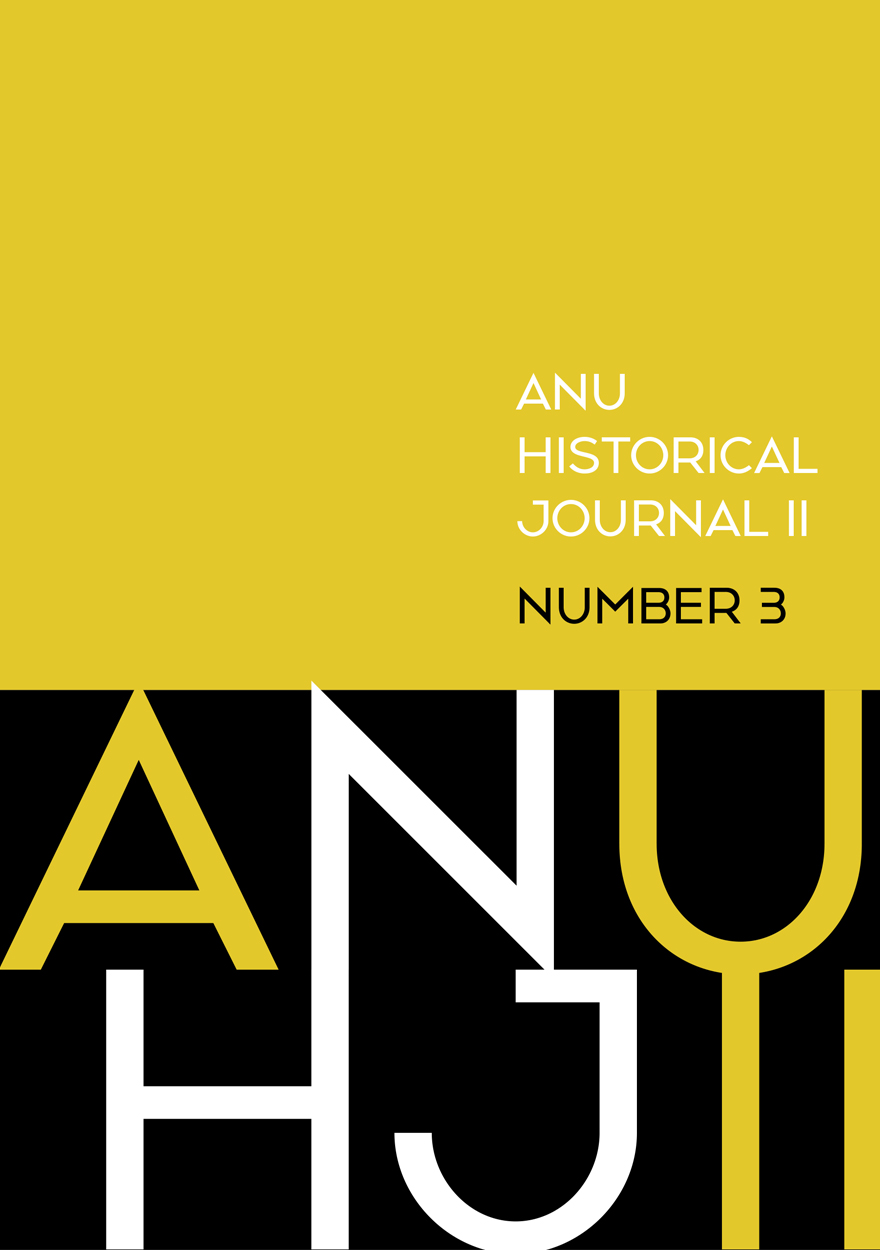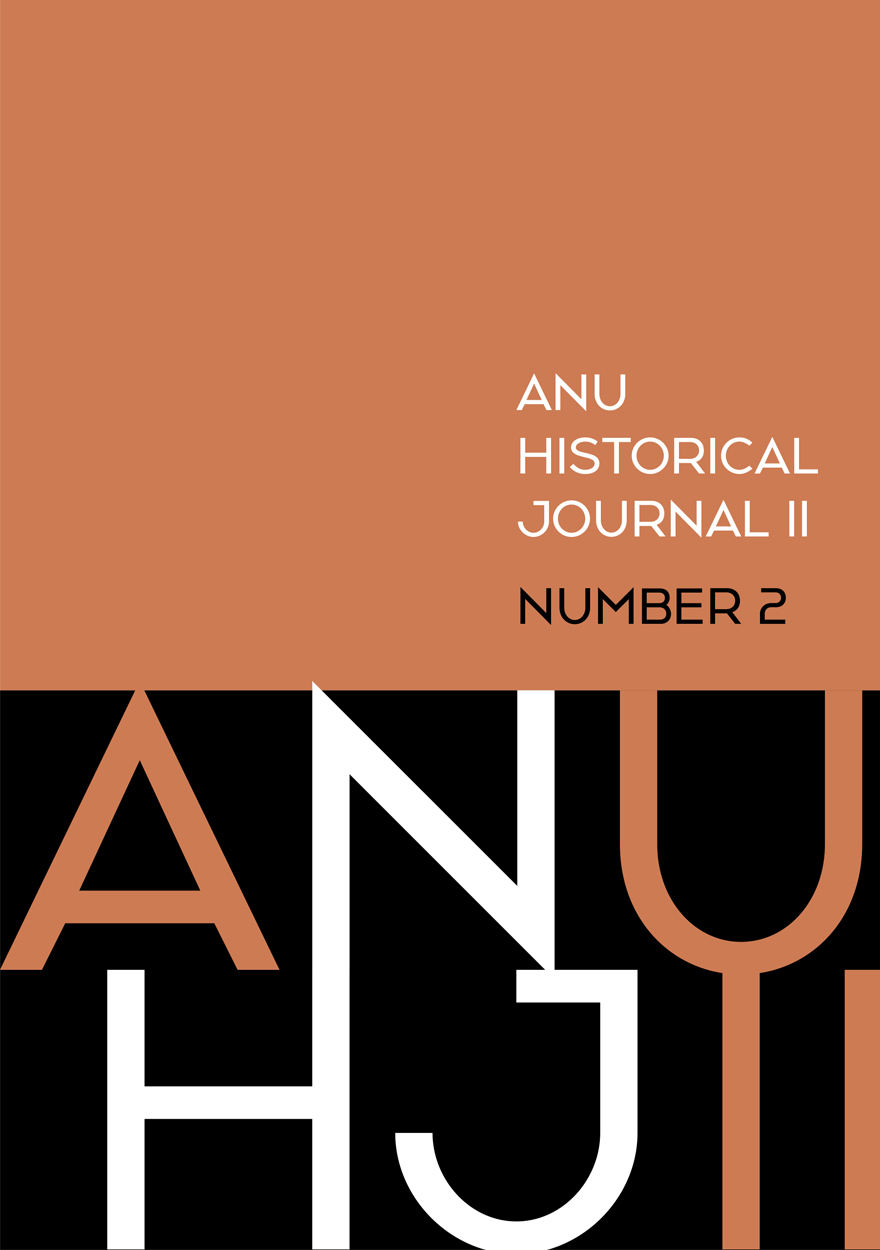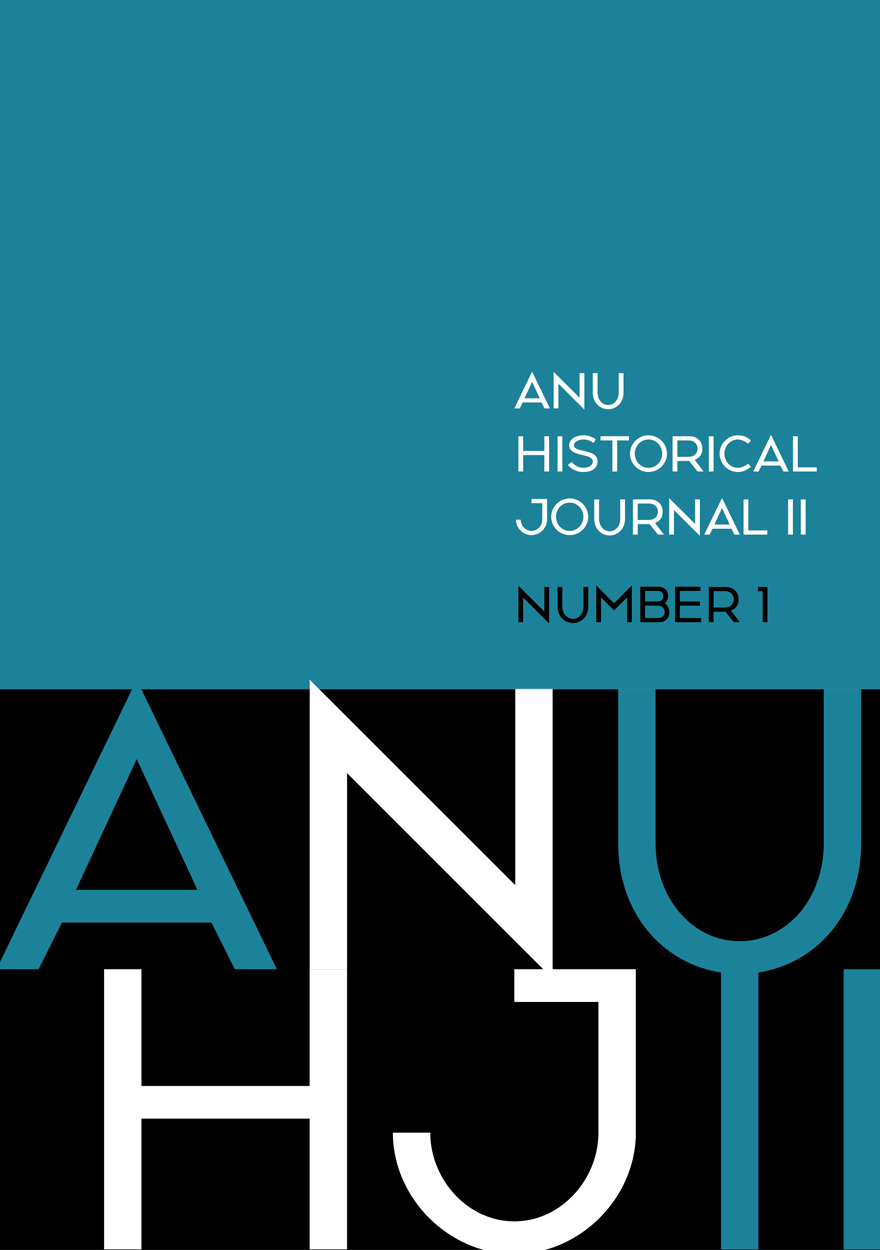ANU Historical Journal II
The ANU Historical Journal II (ANUHJ II) is a peer-reviewed academic history journal of The Australian National University and is edited by undergraduate and postgraduate history students. As a revival of the ANU Historical Journal, which was published between 1964 and 1987, it maintains a special interest in publishing the research of students and recent graduates across Australia. It publishes articles that engage with historical topics from a range of perspectives and geographies. To date, it has published articles that contribute to women’s history, Australian history, Indigenous histories, contemporary history, and more.
The ANUHJ II’s editorial board consists of individuals of a variety of backgrounds, including postgraduate students, honours students and former students of ANU.
The journal’s goal is to create a space for students and academics to publish in conversation with one another. It aims to provide publishing opportunities to a variety of individuals, fostering collaboration and enthusiasm in historical studies. The journal also hopes to create intellectual conversations across disciplines by encouraging the publication of works of an inter- or transdisciplinary nature, focused upon historical material.
Ownership and management
The Australian National University’s College of Arts & Social Sciences and College of Asia & the Pacific provided the initial funding for the ANU Historical Journal II. The College of Arts & Social Sciences has committed future funding to the journal. ANU Press publishes a free electronic version and print-on-demand hard copy of the journal.
Publishing schedule
The ANUHJ II is published annually.
Access
Fully open-access electronic publication available through ANU Press. Print-on-demand hard copy option available through ANU Press.
Copyright and licensing
Published under Creative Commons Attribution-NonCommercial-NoDerivatives 4.0 International (CC BY-NC-ND 4.0).
Revenue sources
From 2017 to 2019, the ANUHJ II received funding from the College of Arts & Social Sciences and College of Asia & the Pacific at ANU. From 2020, the ANUHJ II will be funded by the College of Arts & Social Sciences and Research School of Social Sciences.
Author fees
There are no fees charged to authors for publishing work in the ANUHJ II.
Peer review process
All articles submitted to this journal undergo a double-blind peer-review process. The peer-review process is arranged by the Journal Editor, who then decides upon publication, amendment or rejection. Manuscripts that undergo amendment may be subject to further review by the Journal Editor or an external reviewer.
Process for identification of and dealing with allegations of research misconduct
If the Journal Editor receives a credible allegation of misconduct by an author, reviewer, or editor, then they have a duty to investigate the matter with ANU Press, in consultation with relevant Associate Editors and members of the Editorial Board. If the claim is substantiated, the Editor will follow the guidelines set out by COPE for retracting the article in question.
If the Journal Editor receives convincing evidence that the main substance or conclusions of an article published in the journal are incorrect, then, in consultation with the journal’s Associate Editors and/or Editorial Board and ANU Press, the Journal Editor will ensure the publication of an appropriate notice of correction.
Publication ethics
The journal follows the guidelines set out by the Committee on Publication Ethics (COPE): https://publicationethics.org/resources/guidelines
Duties/responsibilities of authors
Authors are responsible for providing:
- original submissions of articles, fully referenced according to the journal’s guidelines, which follow Chicago style with Australian spelling. For more details on Chicago style, please see: www.chicagomanualofstyle.org/tools_citationguide.html (incorrect referencing will mean that articles may not be considered for publication)
- payment for all costs and copyright permissions of all images
- filling out journal copyright and author’s declaration forms, which will be provided to authors once an article is accepted for publication
- acknowledgement of any material that has been previously published
- acknowledging any external research grants/conflicts of interest.
Duties/responsibilities of editors
- The Editor of the ANUHJ II may reject a submitted manuscript without formal peer review if he/she considers it to be inappropriate for the journal and outside its scope.
- The Editor reserves the right to have final decisions on the content of all journal issues.
- The Editor keeps the peer-review process confidential.
- The Editor will make all reasonable effort to process submissions on time.
- The Editor will delegate the peer review of any original self-authored research article to a member of the editorial or advisory board as appropriate.
Duties/responsibilities of reviewers
Reviewers are responsible for ensuring:
- timely production of reviews
- fair and unbiased assessment
- they follow the guidelines for review document of the journal, which will be provided to the reviewer once they accept the position.
In addition, reviewers will keep in mind the following guidelines for the review: https://publicationethics.org/files/Ethical_Guidelines_For_Peer_Reviewers_2.pdf
Editorial team
- Co-Editor: Matilda Hatcher, The Australian National University
- Co-Editor: Aaron Marston-Pattison, The Australian National University
- Associate Editor: Zoe Smith, The Australian National University
Please send article submissions or abstracts to the Editors, Matilda Hatcher and Aaron Marston-Pattison, Email: anuhj@anu.edu.au
Abstracts should be no more than 200 words. Articles should be in the range 5,000 to 8,000 words (including footnotes).
Style and referencing: please use footnotes in Chicago style, and follow Australian spelling. For more details on Chicago style, please see: www.chicagomanualofstyle.org/tools_citationguide.html
The journal also accepts letters and short ‘think pieces’. Please contact the Editors for further information or see the website for details: anuhj.com.au.

ANU Historical Journal II: Number 4 »

ANU Historical Journal II: Number 3 »

ANU Historical Journal II: Number 2 »




